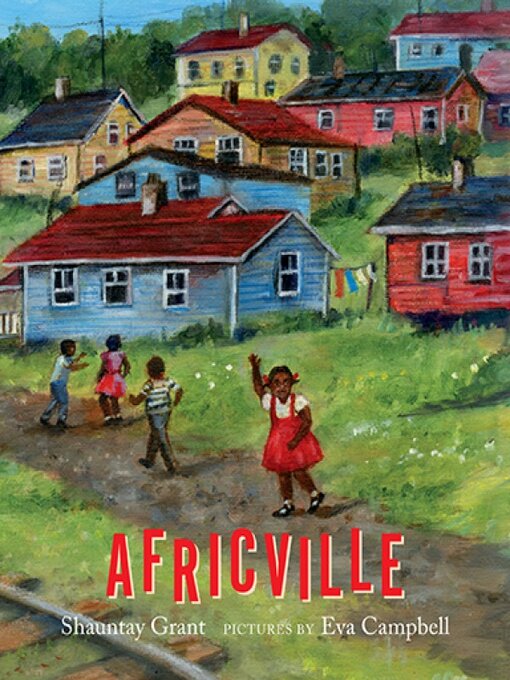Winner of the Marilyn Baillie Picture Book Award
Winner of the Lillian Shepherd Memorial Award for Excellence in Illustration
Finalist for a Governor General's Literary Award, Young People's Literature – Illustrated Books
Finalist for a Ruth and Sylvia Schwartz Children's Books Award
When a young girl visits the site of Africville, in Halifax, Nova Scotia, the stories she's heard from her family come to mind. She imagines what the community was once like —the brightly painted houses nestled into the hillside, the field where boys played football, the pond where all the kids went rafting, the bountiful fishing, the huge bonfires. Coming out of her reverie, she visits the present-day park and the sundial where her great- grandmother's name is carved in stone, and celebrates a summer day at the annual Africville Reunion/Festival.
Africville was a vibrant Black community for more than 150 years. But even though its residents paid municipal taxes, they lived without running water, sewers, paved roads and police, fire-truck and ambulance services. Over time, the city located a slaughterhouse, a hospital for infectious disease, and even the city garbage dump nearby. In the 1960s, city officials decided to demolish the community, moving people out in city dump trucks and relocating them in public housing.
Today, Africville has been replaced by a park, where former residents and their families gather each summer to remember their community.
Key Text Features
historical context
references
Correlates to the Common Core State Standards in English Language Arts:
CCSS.ELA-LITERACY.RL.K.6
With prompting and support, name the author and illustrator of a story and define the role of each in telling the story.
CCSS.ELA-LITERACY.RL.1.3
Describe characters, settings, and major events in a story, using key details.
CCSS.ELA-LITERACY.RL.1.4
Identify words and phrases in stories or poems that suggest feelings or appeal to the senses.
CCSS.ELA-LITERACY.RL.1.7
Use illustrations and details in a story to describe its characters, setting, or events.

